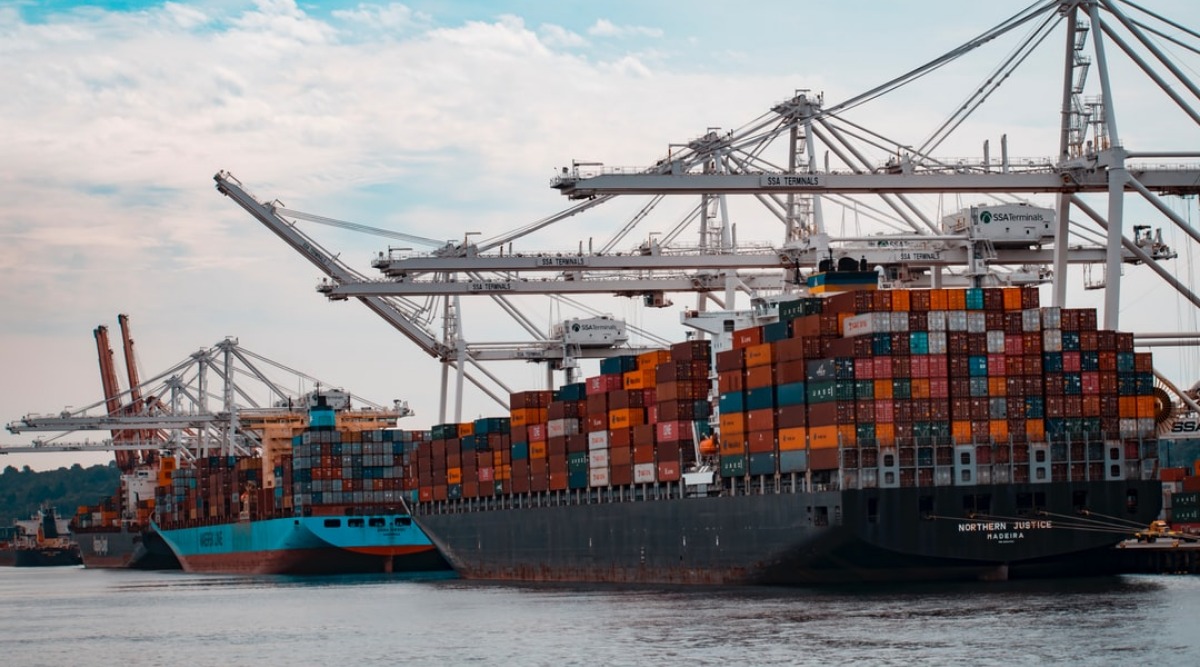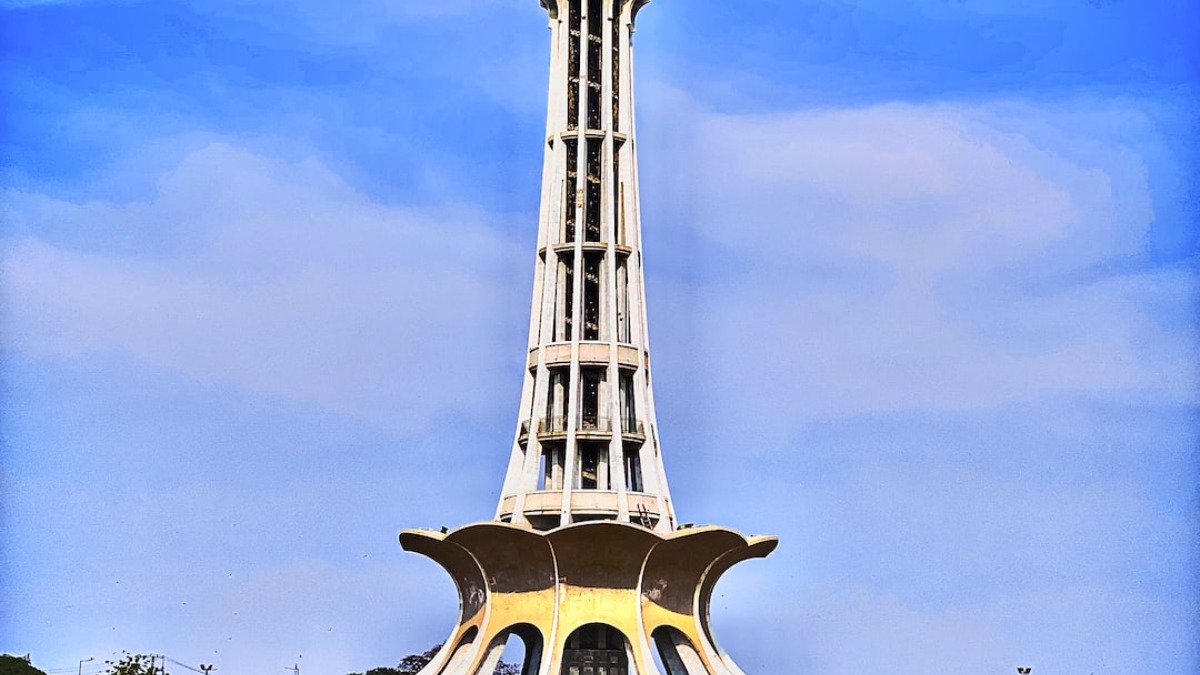Exports
PAKISTAN’S EXPORTS TO JAPAN EXPERIENCE A 40% GROWTH

Pakistan’s exports to Japan have jumped by 40% in the first quarter (Jan – Mar) of 2021 compared to the last quarter of 2020 i.e. (Oct – Dec). The increase is more than 47% when compared to the same period last year i.e. Jan – Mar 2020.
These trade figures have been released recently by Japan’s Ministry of Finance. This trend highlights that Pakistan is coming out of the challenges to international trade posed by the current pandemic. Covid related limitations had brought a slight negative impact on trade between Pakistan and Japan towards the end of last year; however, Pakistan’s exports to Japan bounced back in high numbers. As compared to exports of US$ 61.6 million in the last quarter of 2020, Pakistan has exported goods worth of US$ 86.1 million to Japan from January to March 2021, whereas exports in the same quarter last year stood at US$ 58.7.
This multiplying trend observed in bilateral trade is mainly associated with focused efforts of the Mission to diversify the export mix of Pakistan for Japan. Pakistani Mission in Tokyo, through its Trade and Investment Wing, devised an export diversification strategy ‘Option Pakistan’ last year with a focused layout plan – reaching out to all major business chambers and trade associations in Japan, introducing a range of Pakistani exportable products.
The strategy not only resulted in spreading information about Pakistan and its trade potential but also helped in providing Japanese companies with an attractive source of procurement for their businesses that are facing serious issues of depleting stocks due to travel restrictions. In the recent months seafood products, petroleum, dry fruits, spices and minerals have contributed to Pakistan’s rising exports to Japan; whereas, a considerable increase has been noticed in export of woven fabric, knitted garments, honey, sports goods, cutlery, socks, gloves, gems & jewelry and dates.
Ambassador Imtiaz Ahmad along Trade and Investment Counsellor Tahir Cheema held meetings with local government trade departments, regional JETROs and Chambers of Business in Osaka, Kobe, Kyoto, Nara, Sendai, Aomori and other important business hubs. This high-level interaction with the Japanese business community resulted in raising the confidence of Japanese importers in Pakistani goods. Augmenting these efforts, the Mission through its Trade Counsellor Mr. Cheema participated in almost all major trade fairs and exhibitions held in and around Tokyo since resumption of such events since September last year in a hybrid mode as international exporters are unable to enter Japan to display their goods for such promotional activities.
Trade Development Authority of Pakistan (TDAP) is also partnering with the Mission to increase presence of Pakistani companies and products in the upcoming events to be held in a hybrid mode in Japan as the pandemic prolongs, adding to the challenges of manufacturers and exporters. This support will come in the form of enhanced subsidy by TDAP for priority sectors. In the coming months, TDAP, JETRO and Pakistan’s Trade Mission at the Embassy will further strengthen plans to increase Pak-Japan trade.
Discover more from The Monitor
Subscribe to get the latest posts sent to your email.
Analysis
Apple, Inc. Faces Consequences as China Bans the Company from its Government Ministries Amidst Growing Strains

Table of Contents
Introduction
In recent years, there has been a surge in tensions between China and the United States, with both nations engaging in trade disputes and imposing tariffs on various products. This escalating tension has spilt over into the technology sector, particularly affecting one of the most prominent U.S. smartphone companies, Apple, Inc. China’s decision to ban Apple in its government ministry has far-reaching implications for both the company and the two nations involved.
Market Impact
China is one of Apple’s largest markets, accounting for a significant portion of its revenue. With the ban imposed by the Chinese government, Apple faces the risk of losing access to this lucrative market. This ban could lead to a substantial decline in sales and potentially disrupt Apple’s overall growth strategy. Moreover, it could create an opportunity for Chinese smartphone manufacturers to gain a larger market share domestically.
On the other hand, this ban also presents an opportunity for Apple to diversify its market presence and focus on other countries. By exploring and expanding into new markets, Apple can reduce its dependency on China and mitigate the negative impact of the ban.
Geopolitical Implications
The ban on Apple can be seen as a strategic move by the Chinese government in response to the heightened tensions between the two nations. It not only serves as a signal of China’s dissatisfaction but also demonstrates its ability to exert control over foreign companies operating within its borders. This ban sends a strong message to the U.S. government that China is willing to use its market power as a means of leverage in the ongoing trade disputes.
Furthermore, this banning incident may escalate the tensions between the two countries, potentially leading to further retaliation and countermeasures in the technology sector. The move could trigger a wave of protectionist policies, damaging global trade and innovation. It is crucial for leaders of both nations to engage in diplomatic dialogue to avoid an escalation of tensions that could have wider geopolitical consequences.
Technological Landscape
China’s decision to ban Apple from its government ministry could have far-reaching consequences for not only Apple but also for other U.S. technology giants operating within China’s borders. The technology sector is inherently connected and interdependent, meaning that actions taken against one company can send shockwaves throughout the entire industry.
The ban on Apple in China’s government ministry could be viewed as a manifestation of the escalating trade tensions between the United States and China, which have resulted in a series of retaliatory measures by both countries. In this context, the ban on Apple can be seen as a strategic move by the Chinese government to assert its dominance and exert pressure on the U.S. technology industry.
The implications of China’s ban on Apple extend beyond the immediate loss of business for the company. It casts a shadow of doubt over the prospects of other U.S. technology companies operating in China. If Apple, one of the most iconic and successful American technology brands, can be targeted and banned, then other companies may be at risk.
This incident serves as a stark reminder for technology firms to carefully consider the geopolitical risks associated with their operations, particularly when they have a significant presence in countries that may be politically sensitive. It underscores the importance of diversification and having robust contingency plans in place to mitigate the potential impact of sudden geopolitical shifts.
China’s ban on Apple within its government ministry sends a clear signal that geopolitical tensions can have serious implications for technology companies. Industry players must navigate these challenges while remaining vigilant and prepared for potential disruptions that may arise in an increasingly interconnected global marketplace.
Conclusion
The implications of China’s ban on Apple, Inc. in its government ministry amid heightened tensions are far-reaching. Not only does Apple face significant market challenges and the potential loss of a major revenue source, but this ban also carries broader geopolitical implications. The incident underscores the need for technology companies to navigate the complex relationship between politics and business in today’s interconnected world. As tensions persist, it remains to be seen how this situation will unfold and what it means for the future of global technology trade.
Discover more from The Monitor
Subscribe to get the latest posts sent to your email.
Analysis
Five ways how Pakistan can boost its exports to Central Asian States

Table of Contents
Introduction
Pakistan, strategically located at the crossroads of South Asia, Central Asia, and the Middle East, is a country with immense potential to enhance its trade relations with the Central Asian states. With its rich cultural heritage, diverse landscapes, and a population of over 220 million, Pakistan offers a variety of opportunities for economic collaboration and growth.
As the region opens up to deeper economic integration, it is crucial for Pakistan to tap into this opportunity and boost its exports to the Central Asian states. Here are five strategic ways Pakistan can achieve this:
- Improving Trade Infrastructure: Pakistan should focus on developing modern infrastructure, such as rail and road networks, ports, and logistics hubs, to facilitate smooth trade with Central Asian states. Infrastructure upgrades will reduce trade costs and enhance connectivity, making it easier for businesses in both regions to engage in trade activities.
- Streamlining Trade Regulations: Harmonizing trade regulations and simplifying customs procedures is vital to enhance trade efficiency. Pakistan should work towards creating a business-friendly environment by reducing unnecessary bureaucracy and providing clarity and transparency in trade regulations. This will encourage Central Asian states to choose Pakistan as a preferred trading partner.
- Diversifying Export Products: Pakistan can expand its export basket by diversifying its product offerings to meet the diverse demands of Central Asian markets. The country should conduct market research to identify potential products that are in demand and align with its existing strengths. By offering competitive and quality products, Pakistan can gain a competitive edge and boost exports.
- Enhancing Trade Promotion Efforts: Effective trade promotion campaigns are crucial to create awareness about Pakistani products in Central Asian states. This can be achieved through trade exhibitions, bilateral business forums, and cultural exchange programs. Collaborating with relevant institutions and organizing trade delegations can lead to increased interaction between Pakistani and Central Asian businesses, fostering greater trade partnerships.
- Strengthening People-to-People Ties: Establishing better people-to-people connections can greatly contribute to enhancing trade relations. Encouraging cultural exchanges, educational scholarships, and tourism between Pakistan and Central Asian states can create deeper bonds and foster mutual understanding. These connections can lead to stronger economic ties and increased trade in the long run.
Conclusion
Pakistan has significant untapped potential to boost its exports to Central Asian states. By focusing on improving trade infrastructure, streamlining trade regulations, diversifying export products, enhancing trade promotion efforts, and strengthening people-to-people ties, Pakistan can seize the opportunities presented by the growing economies of Central Asia and establish itself as a key trading partner in the region.
By implementing these strategic measures, Pakistan can maximize its trade potential with the Central Asian states and establish itself as a reliable and preferred trading partner in the region. It is important for Pakistan to proactively pursue these opportunities and leverage its geostrategic advantage to drive economic growth and prosperity for its people.
Discover more from The Monitor
Subscribe to get the latest posts sent to your email.
Economy
Pakistan’s trading partners

There have been questions raised on the extent to which foreign policy of Pakistan should reflect its trading relationships with individual countries, regions, and groups of countries which are members of international organizations? This requires determination of which are the major destinations of the country’s exports, and which are the major origins of our imports? What is the regional and country-wise pattern of our trade surpluses and deficits? And which are the major countries to which our exports have shown faster growth?
The analysis has been undertaken with trade data made available by the SBP in its economic data website. For earlier years, the relevant information has been obtained from the SBP publication, Handbook of Statistics on Pakistan Economy.
The top four export markets of Pakistan in 2020-21 are the EU countries combined, the USA, UK, and China. It is significant that the major destinations of Pakistan’s exports are mostly in Europe and North America. Pakistan has been granted GSP plus status by the European Union with some preferential tariff treatment. Pakistan also has a free trade agreement with China which has been implemented in steps from 2006 onwards.
The combined exports to the 27 EU countries aggregated to $6.4 billion in 2020-21. This represents a share of 25 percent of Pakistan’s total exports. The second largest value of exports is to the USA of $5.0 billion, equivalent to 20 percent of total exports of Pakistan.
The other two relatively large destinations of the country’s exports are the UK and China. Combined, the share of Pakistan’s four major export markets is over 62 percent of total global exports. This highlights the extreme regional concentration of the country’s exports. The share of SAARC countries is only 8 percent, despite presence of the SAFTA free trade agreement. It was somewhat higher when there was trade directly with India.
Turning to the regional distribution of the country’s imports, the sources are more diversified. China is by far the dominant exporter to Pakistan. Imports from China aggregated to $13.2 billion in 2020-21, equivalent to over 25 percent of total imports. The other major exporting countries to Pakistan include the OPEC countries with a share of 24 percent, followed by the EU countries and the USA. Overall, the combined share of these countries is close to 55 percent in total imports of Pakistan.
What has been the growth rate of exports to the major destinations? Between 2012-13 and 2018-19, the fastest cumulative increase over the six years is to the UK of 33 percent, followed by a 32 percent increase to Germany and of 11 percent to the USA. The big declines are to China of 27 percent, to Afghanistan of 37 percent and to the UAE of as much as 57 percent.
By far the largest increase in imports has been from China, which has taken full advantage of the free trade agreement with Pakistan. Between 2012-13 and 2018-19, the cumulative increase has been as much as 133 percent. Now China alone accounts for 30 percent of total imports of Pakistan.
The overall trade deficit of Pakistan was very large in 2020-21 at $26.5 billion, with imports over twice the level of exports. Therefore, the likelihood is high that Pakistan will carry a significant deficit with most of its major trading partners. The country-wise balance of trade is given in the table below.
========================================================================
Table 1
========================================================================
Pakistan's Trade Balance with Major Trading Partners, 2020-21
($ billion)
========================================================================
Exports to Imports from Balance of Trade
========================================================================
China 2.0 13.2 -11.2
USA 5.0 2.4 3.6
EU Countries 6.5 3.7 2.8
Major OPEC Countries 1.9 9.4 -7.5
Others 10.2 28.7 -18.5
========================================================================
Total 25.6 52.1 -26.5
========================================================================
Pakistan has a very large trade deficit with China, equivalent to 42 percent of its global deficit. The deficit has been growing rapidly. Pakistan’s exports to China have been declining while imports have shown fast growth. Today, China’s exports to Pakistan are six times its imports from Pakistan. The time has come for a review of the implementation of the 2006 Trade Agreement between Pakistan and China. Pakistan needs to seek more quid pro quo from China.
The trade surplus with two major trading partners – the USA and the EU countries – is of $3.6 billion and $2.8 billion, respectively. These are the bigger markets, especially for textile products. The trading relationship with these countries needs to be preserved and built upon.
Pakistan has preferential access to the EU market through the GSP plus programme since 2014. This allows a large share of Pakistan’s exports to enter EU countries free of duty. Two criteria must be met for continuation of this facility. First, GSP-covered imports should be less than 2 percent of EU’s imports from all GSP beneficiaries. The share currently of Pakistan is 1.6 percent. Second, the seven largest GSP covered products must account for at least 75 percent of Pakistan’s total GSP covered exports to the EU. The share currently of these products is 94 percent.
Further, Pakistan has had to ratify 27 core international conventions and subscribe to binding commitments to implement them effectively. These are mainly UN and ILO conventions and other conventions on environment. The GSP status of Pakistan is periodically reviewed by the EU. Weak areas of implementation by Pakistan relate to gender inequality, workers’ rights, and the presence of child workers.
There has been some focus recently on Pakistan’s trading relationship with Russia. The current volume of trade between the two countries is small with $163 million of exports and $593 million of imports. The imports are largely of wheat. Now with the international trade sanctions on Russia following the invasion of Ukraine, new sources of wheat will have to be found when the quantity required could rise to almost 5 million tons given the failure of the current wheat crop.
Via BR
Discover more from The Monitor
Subscribe to get the latest posts sent to your email.
-

 Featured5 years ago
Featured5 years agoThe Right-Wing Politics in United States & The Capitol Hill Mayhem
-

 News4 years ago
News4 years agoPrioritizing health & education most effective way to improve socio-economic status: President
-

 China5 years ago
China5 years agoCoronavirus Pandemic and Global Response
-

 Canada5 years ago
Canada5 years agoSocio-Economic Implications of Canadian Border Closure With U.S
-

 Conflict5 years ago
Conflict5 years agoKashmir Lockdown, UNGA & Thereafter
-

 Democracy4 years ago
Democracy4 years agoMissing You! SPSC
-

 Democracy4 years ago
Democracy4 years agoPresident Dr Arif Alvi Confers Civil Awards on Independence Day
-

 Digital5 years ago
Digital5 years agoPakistan Moves Closer to Train One Million Youth with Digital Skills
























